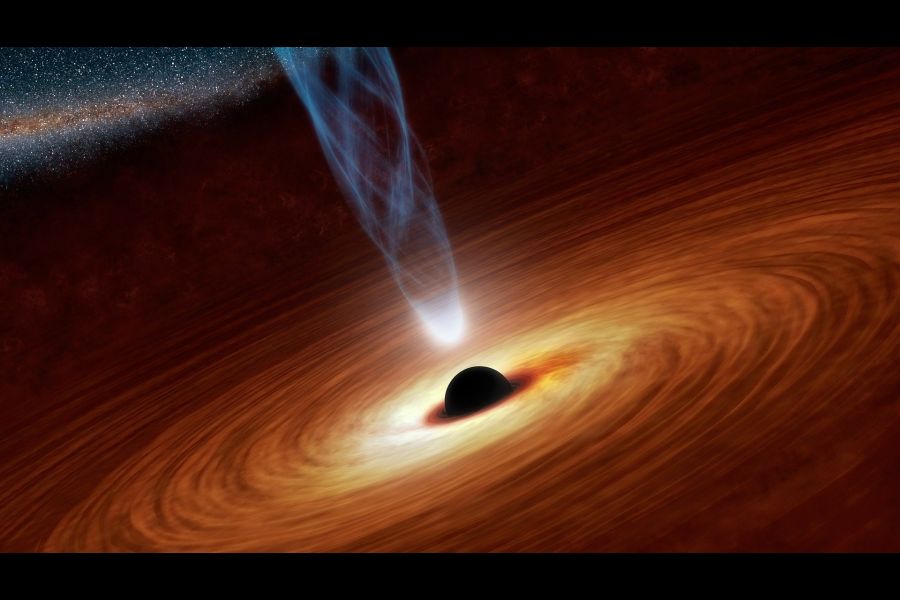Dr. William Brown is a professor of neurology at McMaster University and co-founder of the Infohealth series at the Niagara-on-the-Lake Public Library.
Dr. William Brown
Special to The Lake Report
Normally we wouldn’t associate mathematical equations with beauty.
But that’s precisely the claim made by Carlo Rovelli, an Italian physicist in his popular gem of a book, “Seven Brief Lessons on Physics,” about Einstein’s equation in his 1915 general theory of relativity that set forth the relationships between space-time, mass, energy and gravity.
Here’s the equation:
Rµv – ½ gµv = 8πTµv
But what does the equation mean? Walter Isaacson in his masterful biography, “Einstein: His Life and Universe,” explains the equation this way: “The left side of the equation compresses all the information about how the geometry of spacetime is warped and curved by objects and the right side describes the movement of matter in the gravitational field. The interplay between the two sides shows how objects curve spacetime, and how, in turn, this curvature affects the motion of objects.”
Or as the physicist John Wheeler put more simply and eloquently, “Matter tells spacetime how to curve, and curved space tells matter how to move.”
Even so the equation doesn’t look all that impressive. Yet that equation transformed how we see the universe. How so? Before general relativity came along, the universe was thought of in Newtonian terms. The universe was a static affair, without a beginning or end, and planets orbited the sun according to Newton’s laws of motion and gravity – except for Mercury.
Einstein’s theory for general relativity upended that understanding. For example, it wasn’t long before Lemaitre, working with Einstein’s equations for general relativity, suggested that the universe was expanding and if expanding, must have been very much smaller and denser at some point in the distant past – a hypothesis later coined as the Big Bang.
General relativity revealed a four-dimensional universe, three for space and the fourth for time, linked together as spacetime and shaped and warped by gravitational fields, in turn created by mass. From that realization, there were several important implications.
One was that major cataclysmic events such as the merger of pairs of black holes or a pair of neutron stars would roil space-time, sending ripples throughout the space-time fabric of the universe. The first such ripples from the merger of a pair of medium-sized black holes was detected in 2015, for which work a Nobel prize was awarded in 2017. Since then many collisions of pairs of black holes have been detected.
Going further was the prediction that dense masses such as the left-over matter from a supernova explosion of a star could collapse space-time about itself to create a blackhole – black because the gravitational pull of all that mass traps the escape of light and everything else that falls into the black hole.
Despite the theoretical possibility of blackholes, it was only last year that the first black hole was actually seen – it was gargantuan, with a mass millions of times that of our sun.
This year the Nobel prize in physics was awarded to Roger Penrose from the United Kingdom, “for his discovery that black hole formation is a robust prediction of the general theory of relativity,” and the independent but mutually supportive studies of Reinhard Genzel from Germany and Andrea Ghez from the United States, which revealed indirect evidence for a supermassive black hole at the center of the Milky Way.
Such is the strength of the gravitational field surrounding this giant black hole, that the trajectories of nearby stars were altered – betraying the presence of this giant black hole. Probably most galaxies harbor similar giant black holes, which play important roles in the formation, life and fate of stars in their galaxies.
Not all black holes are giants of the order of millions – even billions of stellar masses. Some are more pedestrian, such as the just over 20 or so sun masses of the two black holes whose collision produced the first detectable gravitational waves. At the other end of the spectrum, some theoretical physicists suggest there might be tiny, atom-sized black holes.
All of which brings us back to that equation – Is it beautiful? I think so because of the astoundingly linked and mobile nature of the universe it describes. In the same vein, that even more cryptic equation, E = mc2 is beautiful too, for it describes in the simplest, most direct fashion, the fundamental relationship between energy (E) and mass (m), and incidentally, why stars shine.
LIBRARY SESSIONS: The next session on physics at the library wraps up the physics series and will explore important questions such as the limits to which we can understand the universe and the natural world. Then, beginning in November, together we will explore this year’s crop of Nobel prizes. In my opinion, based on the quality and impact of the studies, this is a very good year. So, plan to attend.
For information and to register for the series, contact the Niagara-on-the-Lake library or check the library website, notlpubliclibrary.org, for topics, dates and times.









